Text
Quick Update + Patreon?
Hello! This is Min, the creator of FYCM, aka, Fuck Yeah Chinese Myths.
Hi. Again.
Are people still around this website? Like, seriously.
It’s been a long time since I touched this blog, and it’s like super old. Tumblr also seems to be kinda dead, which is why I asked. I don’t know how it happened. Life happened, maybe.
The years after this blog have been hard for me. I went through several career changes/job losses, several relationships, and then, of course, the pandemic. Everything just fell by the wayside. But people were still reblogging my shit from time to time, and today, when I opened my email, I saw that people were still emailing me to do their uni research for them -- nope, sorry, can’t do your homework for you -- and some are still wondering if I am OK. Others have emailed me with permission to publish my content -- sure, go ahead, just give me credit -- and so on.
If you have sent me the odd message over the years and I didn’t reply, please don’t take it personally. Life just--overwhelmed me, man.
So I got to thinking--what if I set up a Patreon? I don’t know if anyone else is still around or if anyone else wants to read, but I’m gonna put all of my content back up on there, so it’ll be easier to read and access. You can help keep the blog going if you like -- if you donate, you get to see the blog post earlier, and maybe there will be some more bonus content.
So what do you say? Do I have enough of an audience here?
30 notes
·
View notes
Text
Rare Song Dynasty Bowl Sells For Record-Breaking Amount
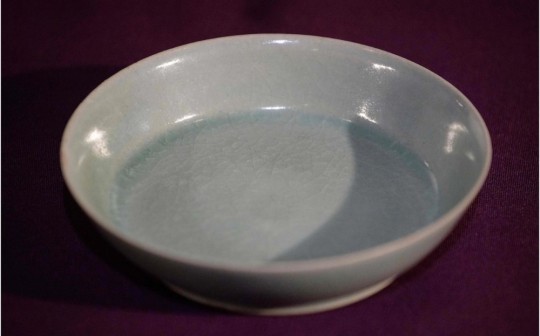
This simple blue bowl, about 1,000 years old, sold at auction in late 2017 for $37.7 million dollars. That breaks the previous record for Chinese porcelain, $36.05 million, set in 2014 for a Ming dynasty wine cup which was sold to a Shanghai tycoon. This unassuming ru-ware bowl with a blue-green glaze and complex ‘ice crackle’ pattern was used for washing brushes. It was originally created for the imperial court during the Northern Song Dynasty, sometime between 960 to 1127 CE.
What makes the bowl so special is its rarity: ru-ware was made during only a short period, not exceeding twenty years, and few pieces survive today. This bowl is one of only four ru-ware pieces held in private hands.
396 notes
·
View notes
Video
youtube
102 notes
·
View notes
Text
my favorite thing i’ve learned in college is that way back in ancient china there was this poet/philosopher guy who wrote this whole pretentious poem about how enlightened he was that was like “the eight winds cannot move me” blahblahblah and he was really proud of it so he sent it to his friend who lived across the lake and then his friend sends it back and just writes “FART” (or the ancient Chinese equivalent) on it and he was SO MAD he travels across the lake to chew his friend out and when he gets there his friend says “wow. the eight winds cannot move you, but one fart sends you across the lake”
405K notes
·
View notes
Link
A NYT obituary for Zhou Youguang, the inventor of the Pinyin system for Romanizing Chinese, provides a nice summary of the history of the writing system. Excerpt:
Zhou Youguang, known as the father of Pinyin for creating the system of Romanized Chinese writing that has become the international standard since its introduction some 60 years ago, died on Saturday in Beijing, Chinese state media reported. He was 111.
Adopted by China in 1958, Pinyin was designed not to replace the tens of thousands of traditional characters with which Chinese is written, but as an orthographic pry bar to afford passage into the labyrinthine world of those characters.
Since then, Pinyin (the name can be translated as “spelled sounds”) has vastly increased literacy throughout the country; eased the classroom agonies of foreigners studying Chinese; afforded the blind a way to read the language in Braille; and, in a development Mr. Zhou could scarcely have foreseen, facilitated the rapid entry of Chinese on computer keyboards and cellphones.
It is to Pinyin that we owe now-ubiquitous spellings like Beijing, which supplanted the earlier Peking; Chongqing, which replaced Chungking; Mao Zedong instead of Mao Tse-tung; and thousands of others. The system was adopted by the International Organization for Standardization in 1982 and by the United Nations in 1986. […]
In attempting to devise an alphabetic system with which to transliterate Chinese, Mr. Zhou was continuing an orthographic tradition that went back at least to the 16th century.
Traditional Chinese writing, conceived more than two thousand years ago, is a logographic system, in which each word of the language is represented by a separate character. To the reader, each character conveys mainly semantic, rather than phonetic, information.
This fact gives Chinese writing an inherent advantage: It can be used as a common system with which to write the country’s many mutually unintelligible dialects. Thus, speakers of dialects as divergent as Mandarin and Cantonese can communicate with one another in writing, with each character encoding the same meaning — “house,” “blue,” “think,” and so on — regardless of its pronunciation in any one dialect.
But by the same token, such a system carries a great disadvantage: Because the characters disclose little phonetic information, it is not possible, without prior knowledge, to look at a Chinese word and know how to pronounce it.
For readers, there is also the immense onus of needing to master thousands upon thousands of discrete characters to attain even basic literacy: Compare the mere two dozen or so characters that users of alphabets have to learn.
“Pinyin is not to replace Chinese characters; it is a help to Chinese characters,” Mr. Zhou explained in the interview with The Guardian. “Without an alphabet you had to learn mouth to mouth, ear to ear.”
As a result, illiteracy remained rampant throughout China well into the 20th century — affecting, by some estimates, as much as 85 percent of the population. It was also inordinately hard for foreigners to learn to read the language.
Other Romanization systems had been tried before, beginning with one developed in the late 1500s by Jesuit missionaries from Europe. Until the advent of Pinyin, the most prevalent system was Wade-Giles, the work of two British diplomats in the late 19th century.
But the Wade-Giles system, linguists have long agreed, is unwieldy and inaccurate. It employs a cumbersome set of numbered superscripts to indicate Chinese tones — the meaningful variations in pitch that distinguish many words in the language. Nor does it reflect Mandarin pronunciation especially faithfully.
At the start, Mr. Zhou and his committee confronted a set of foundational questions: Should Pinyin employ the Roman alphabet, the Cyrillic or a purpose-built one? How should it indicate the tones of the language?
Though China’s close alliance with the Soviet Union made Cyrillic seductive, the committee ultimately settled on Roman because of its worldwide prevalence. Simple diacritical marks, including acute and grave accents, were used to represent tones.
Read the whole thing to learn more about Zhou’s life and other works
Wikipedia has a decent overview of Pinyin as compared to IPA and other writing systems.
3K notes
·
View notes
Text
Mulan Annotated #8 - The Final Boss
Now we’re here! This is most likely the penultimate post of Mulan Annotated. It was such a wild ride, and this was so educational doing this. Not to mention that I spent half-a-day googling Chinese cupboards. LOL.

Anyway, I’ve spent some time in this post talking about Chinese guardian lions, and let me tell you something--the gates of this Forbidden City have two male lions, unlike the one below, because the one below has a female lion with a baby cup under her paw (it’s the one on the right).
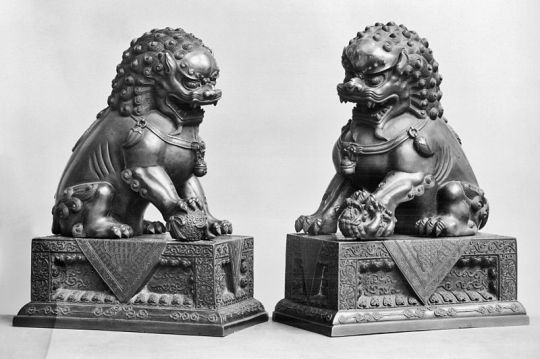
The conventional is to have one male and female, like the one shown in black and white, but the detail was probably taken out to make it easier to animate. Probably.

The Emperor’s hat has lost its beads! Noo.
Is it still the Emperor’s hat when all the beads are gone? Hmmmm.

All right, this scene is so very powerful in ‘90s cinema, and let me tell you why. The gang of three disguise themselves as women while the soundtrack of the training montage plays, which is a deliberate and obvious way to undermine all the gender roles that have been instilled in them right from the very beginning.
But by embracing their feminine side, all of them show that strength (which is often perceived as male) and femininity are not mutually exclusive, and that they go hand in hand. In fact, their femininity provides them with the element of surprise and helps then defeat Shan Yu because it’s not seen as a threat.

TL;DR The movie’s message is never underestimate women, people shouldn’t be boxed into gender roles, and that is why, at the end of the day, I still love this movie.

The part where Shan Yu commands the Emperor to bow to him is pretty significant, because, according to the ancient Chinese worldview, China was the centre of the world and everything surrounding it had to bow to it and swear allegiance to it. In history, many vassal states have sworn allegiance to China and admitted its superiority, so doing this actually undermines the worldview that the Emperor is the centre of the universe.

You see what I mean about strength and femininity not being mutually exclusive?

I think Disney’s designers were not terribly, uh, careful with the sword designs because the closest design to Shan Yu’s sword is the Moro Kris Sword from the Philippine Islands, that looks like this:

Source here.
We also see smaller Kris blades used by people from Brunei, Malaysia, and Thailand.
If the Huns were really based on the Mongols, the sword will look like this:
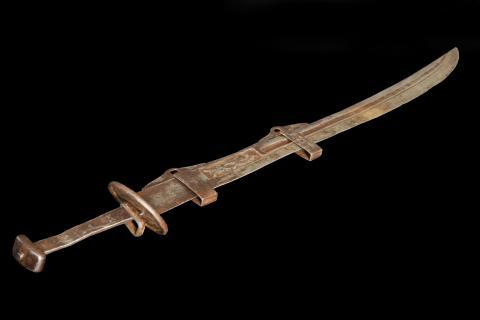
Source here.

Chien Po is freaking out because you’re not allowed to touch the Emperor at all. He has the mandate of heaven, which kinda of means he was chosen by the gods to rule China.

But this is a life-or-death situation, so I guess it’s an exception.
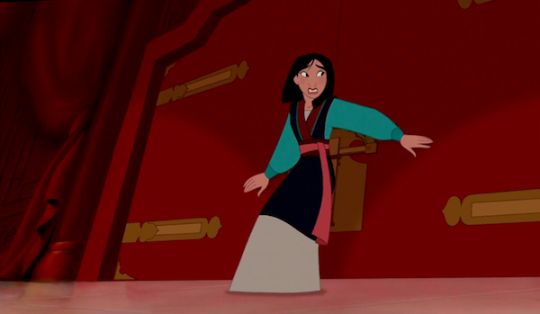
Something’s missing from the doors. A couple of guardian lions, perhaps?

Here we go. Source here.
The makers of the movie in this video (watch from the 5:13 mark) have emphasised that this moment is important in the film because Shan Yu underestimates her abilities as a woman.
By now, we know one of the film’s messages is that femininity and strength and not mutually exclusive, and her using the fan proves just that.

According to Ancient Chinese Weapons: A Martial Artist's Guide by Jwing-Ming Yang, here’s what a fan can do:


The words on the yellow barrel are 大竹 (dà zhú), which is literally written as big bamboo.
The words at the bottom are 危险 (wéi xiǎn), which means danger.

I don’t think anyone in the history of China has ever done this. Like, no Emperor and nation has bowed to a hero, but hey--that’s how you take creative liberties with a story, I guess.
The closest we have was Liu Bang, who established the Han dynasty while he was still living. His father had to bow to the Emperor, but Liu Bang decided that he shouldn’t. (Because filial piety, amirite?)
After this, the Emperor asks Mulan to be a member of his council. There was only such a thing in the Qing dynasty, although the original story does have the Emperor asking Mulan to be a military advisor of sorts, as well.
In this version and both versions, all Mulan does is want to go home, because that’s who she is at the end of the day--someone who is filial.
Yes, filial piety is a thing that Confucius came up with and it’s basically the respect and obedience you have to have for one’s elders, and doing whatever it takes to protect your family.

This Emperor’s crest/necklace probably didn’t exist at all and was used to further the plot.
However, in the Qin dynasty, when the first Emperor united all the Warring states, a piece of jade was carved to symbolise his eternal rule. It was called the Heirloom Seal of the Realm.
"Having received the Mandate from Heaven, may (the emperor) lead a long and prosperous life." (受命於天,既壽永昌) were written by Prime Minister Li Si, and carved onto the seal by Sun Shou.
The seal was passed up to the Tang dynasty, but was lost during the Five Dynasties and Ten Kingdoms period (907-960).
Whichever archaeologist finds it will have definitely struck gold.
247 notes
·
View notes
Text
Mulan Annotated 7 - Holy Shit, The Huns Are Everywhere, Especially In The Forbidden City
Ok, we’ve already covered fire arrows and cannons here, and holy fu--the Huns are here:

This video talks about how they animated so many effing Huns and it was more of a technical thing, so we’re moving on and talking about horses.
Ok, so going back to the Tang dynasty, or the period of time before the Tang dynasty, the land was surrounded by so many nomadic tribes in the north. Among them were the Turks, who would wreak havoc, and they were the ones who pretty much toppled the Sui Dynasty.
Since I already established that the Huns were loosely based on the Mongols, it’s pretty easy to see why they were all on horses. However, it’s a little big anachronistic since the Mongols invaded towards the end of the Song dynasty.
Anyway, here’s more stuff about cannons.

The commentary is from Learn Chinese History:

In other words, how have Mulan and the other soldiers not injured? I am not sure if the wick was used with early cannons, but the description of bamboo tubes certainly matches that of the movie.
So Mushu’s claim, as he’s hurtling towards the mountain, is right. Mulan should actually have attacked Shan Yu, since it would have hurt him the most and be the most effective way. This trajectory is not possible given the technology at the time.

But movie magic makes us believe that this works, and we’re all rooting for Mulan because this is a pretty clever strategy, technical impossibilities aside.
In the movie, it’s easy for Shang to throw a sword at her and pardon her for a life for a life, but in actual fact, she would have probably been escorted to a court and then tried in the Emperor’s court, since doing this was a huge deal and a big no-no.
Because of the magnitude of her “crime”, Mulan would have been tried in the Imperial Court and probably executed if she were found out. The Emperor would have probably executed her if she came from a prominent family in the military, which may have been highly likely, and that’s not all. Were he particularly tyrannical, he would also have executed up to nine generations of the family. Read more here.
During the Tang Dynasty (618–907), the family punishment was not abolished, but it was only applied to those who plotted against the rule of the Emperor. By this time, the penalty had become more regulated and different; from the Tang Code, the sentence involved the death of parents, children over the age of sixteen, and other close kindred, and was only applied to the offenses of treason and rebellion.

He could also have chosen to be lenient though, and he would have probably gone wish banishment instead, but it all really depends on his pre-disposition towards the family.
After throwing down the sword, Shang says, “A life for a life, a debt is repaid.”
This is a reflection of the way Chinese people think, and they feel indebted to people who have done them a favour, and will think of ways to pay them back. It kinda explains why Chinese people love fighting for the bill, or how they like extending their generosity as the person who experiences this generosity is indebted to the “benefactor”, in that sense.
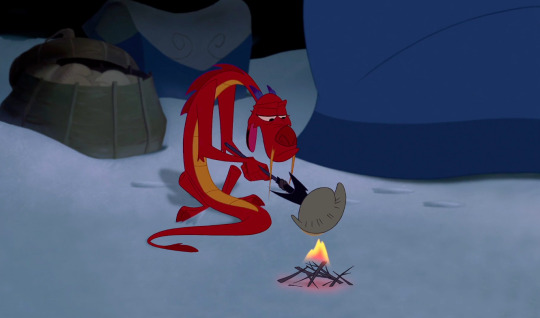
How the hell did the wontons manage to be saved? Like, everything was buried deep in snow and there are wontons? Unless the doctor provided the wontons?

Here are dumplings in real life. The image is from here. You can put them in soup and eat them with soy sauce. Yummy.

According to this website, the earliest kites were made out of wood and were first seen in the Warring States period (BCE 475-221) of the Eastern Zhou dynasty (BCE 770-221). They were called mu yuan. It was totes a references to Mozi, a philosopher who was so not down wit’ Confucianism and Daoism.
Paper kites were used as emergency warnings, which were known as zhi yuan. This was used when the city of Nanjing was under attack by Hou Jing, this Nothern and Southern Dynasty general who served in the Northern Wei (CE 386-533), the Eastern Wei (CE 534-549) and the Liang (CE 502-556) Dynasties.
Wow. This really foreshadows what happens next.

Ok, there are lots of different kinds of acrobats. They’re classified under this thing called variety arts, like lion and dragon dancing, and the face changing thing 变脸 (biàn liǎn).
Also, real life contortionists train a lot. You can read more here. I don’t like The Daily Mail but never mind. Sigh.

Chi Fu, how dare you bask in the glory when you didn’t even fight. You were the one egging on Shang to condemn Mulan and now this. You only care about your own “face”. End rant.

This official really confuses me. His headgear is a Gaoshan Guan (高山冠), literally tall mountain crown, and looks most like the one on the rightmost bit. It’s for high-ranking officials, so I don’t understand why this official would wear this kind of hat.

The robes resemble the Ming dynasty ones below. Just that this guy’s robes are less roomy and don’t have the mandarin squares.

Image from Wikipedia
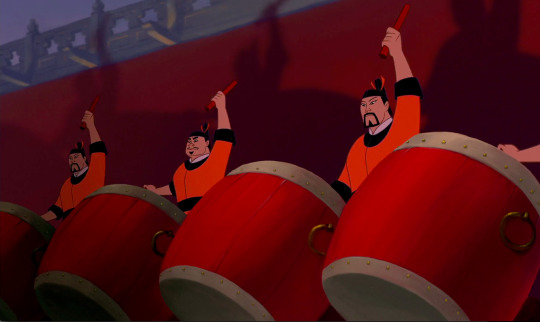
The headgear on these drummers is baffling. Like, it’s a modification of the third one from the left? And the flaps that point down are made to straighten up? Someone correct me if I am wrong, thanks.

You can find info about the caps here.

Well, what do you know--the first appearance of fireworks was recorded in the 7th century, the Tang Dynasty. People believed the superstition that fireworks chased away evil spirits and brought about happiness.
Check this link out for more information.
Also,

Much forbidden. Such city. Very wow.

Ok The Forbidden City was obviously not built in the Tang, it was built in the Ming Dynasty and was used all the way to the Qing Dynasty, and basically, the Yongle Emperor of the Ming dynasty made 1 million people build this shit and it took 14 years.
Image can be found here, info here.

This is some weird half-lion, half-dragon hybrid thing.
You can find out more about lion dance in my entry, here.
Basically, this is more of a lion dance as the Huns are hiding beneath the body. In dragon dances, the dancers use poles to hold up different segments of the dragon’s body.
Here you go:

Ok moving on...

Ok, this part of the movie is super cool, like. The creatures on the rooftops actually exist in the Forbidden City.

Here’s an excerpt from Wikipedia that tells what these animals stand for:
The maximum number of beasts is nine, including evil-dispelling bull, courageous goat-bull (獬豸), wind- and storm-summoning fish (狎魚), mythical lion (狻猊), auspicious seahorse, heavenly horse, lion, and chiwen (鴟吻, a son of dragon). The maximum number is seen in the lower image, taken at the Hall of Supreme Harmony. Note the addition of an immortal guardian (行什, hangshi, "ranked tenth") in front of the dragon holding to a sword like a cane. During imperial times, this figure was unique to this single building, being the throne hall and therefore the building with the highest status in the entire empire.
Naturally, the dragon at the end symbolises the Emperor, or whoever is in authority.
This part is really clever because Shan Yu is the last a ”creature” on the roof, representing the authority, indicating his desire to to usurp the Emperor.
174 notes
·
View notes
Text
Mulan Annotated 6 - Ok, We’re Really Setting Off This Time
I actually forgot to write about porridge, OMG, porridge, before the military training montage, so here you go.
Mushu, I’m pretty sure porridge did not look like that in ancient China. I know it’s the team putting little jokes in the movie, but porridge did not look like that.
Also, what did I say about chopsticks? Come on, Disney. Come on. You don’t actually eat porridge with chopsticks. you won’t be able to scoop the rice. You use a spoon to mix everything and slowly start eating from the top, because everything else below it is way too hot.
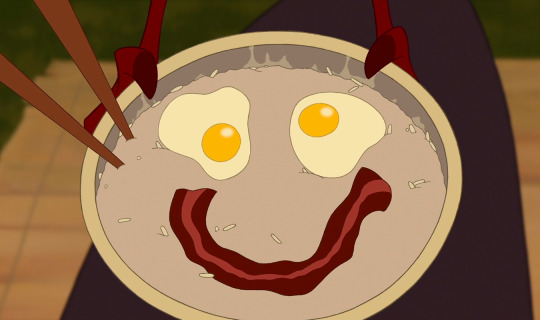
Now that’s more like it!
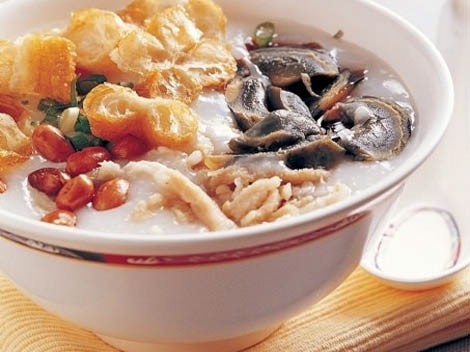
Y’all know that porridge or congee is made from boiled rice and millet, and it’s a pretty easy thing to make. It was said that the Emperor Huang Di was the first one to make porridge, but other Asian cultures have their own version of porridge, too, and have their own recipes.
Don’t really like it ‘cause it’s sick people food.

Strategising with maps is highly probable because Chinese people did start making maps and the earliest record of using them was in the Warring States period, but I am not sure if those little tokens to represent armies were used. If you watch any Chinese TV series or movie, they’re bound to appear.
As you can see, there are some gaps in my knowledge. Let me know if you have any info.
It’s highly unlikely that Chinese royalty would pose like this:
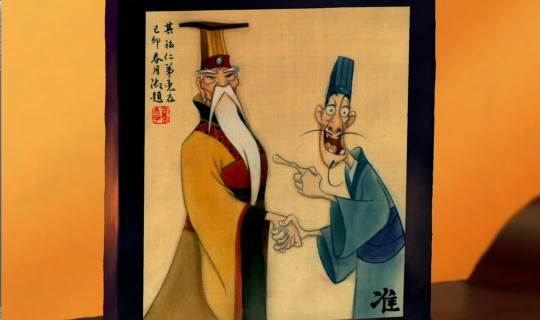
Only someone who has used a camera before would think of this, though I have to admit that the red stamp and the words do appear on some occasional portraits. The stamp is the seal of the artist. No idea what the word in the bottom right hand corner is doing. If you put it together with this character, 时, you’d get 准时 (zhǔnshí), which means punctual.
Also, more often than not, the background would have motifs that suggest what the person’s character was like. It looks more like this:

This is a portrait of the Daoguang Emperor in the Qing dynasty. There are some bamboo shoots in the background, which, according to this source,
“In traditional Chinese culture, bamboo is a symbol of ... beauty. It represents the character of moral integrity, resistance, modesty and loyalty.”
It was definitely much more than aesthetics, for sure. Emperor’s portraits were always painted to show how wonderful or scholarly or learned they are, and reflected their own interests, too.
But I suppose that Chi Fu shaking hands with the Emperor was to show how much of a suck-up he is.
Nothing on this piece of paper makes sense, except for “Protect the South”, which I have boxed up. Come on, Disney.
It is quite interesting though, because it is somewhat correct. The nomadic tribes from the north have always wanted more land and resources that the south had, if history is anything to go by. The south of China had (and still has) fertile fields that consistently produced abundant yields, which were advantageous over the nomadic way of life. It was difficult to grow crops up north, but far better to herd livestock to more fertile ground instead of settling in one place.

Anyway, where did Mushu get that panda? From the bamboo grove that he and Mulan were in? WTH?
Obviously this is for laughs.

Ok, so this part is the montage where they sing about a girl worth fighting for, but it may as well be an advertisement for China and its awesome natural landscapes. I mean, look! This shot is beautiful...

but Gui Lin is more beautiful in real life:
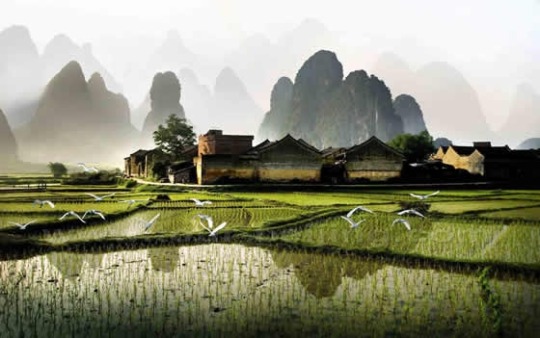
Source here. I’m pretty sure there was some photoshop going on, for sure.

Also, how does Ling’s armour have room for saucy pictures of women? The caption doesn’t make sense? 箩想女郎 (luó xiǎng nǚ láng) if I am not wrong, although I may have misread.
Any ideas?
Thanks lovely readers who pointed out it’s dream girl: 梦想女郎 (Mèng xiǎng nǚ láng).
Here’s also some information about um, well, sexy pics in ancient China. There are no images, but the content is NSFW.
Naughty, naughty Ling indeed.
Ah yes. China is famous for its rice terraces.

This is the Yuangyang rice terrace in Yunnan, the south of China.

You can literally go to China to look at rice terraces. More info here.

You can also look at China’s beautiful waterfalls here.
Such beauty. Much majestic. Very wow.
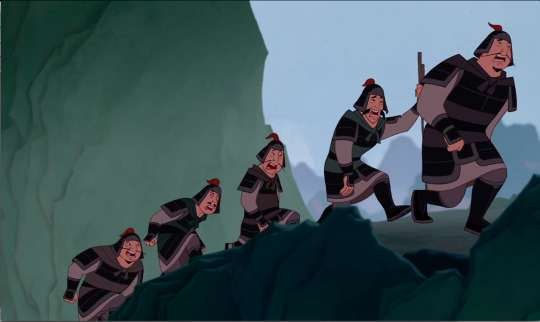
And yes, the soldiers’ armour was definitely based off the terracotta warriors in Xi’An, China. Here’s a pic for reference:

Thanks, Wikipedia.
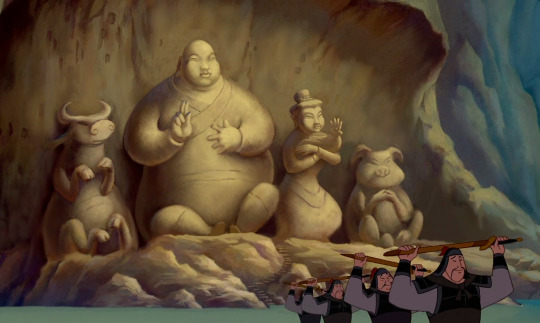
This bit resembles a few of the Buddhas who hang around certain parts of China. Let’s take a look:
Here’s one from the Yunguang Caves. Source here.

And here’s a more famous one:

The Leshan Buddha at Mount Emei. Source here.
But wait a minute! The monk’s hands are all wrong.

There are various hand gestures that one takes when meditating to improve certain aspecst of oneself. You can read a bout it here.
185 notes
·
View notes
Text
Mulan Annotated 5 - Mulan Goes To War
See, what I really like about the sword is the Taotie yazi motif here on the handle.

Edit: One of my followers, @khancrackers, pointed out that the symbol on the sword is a yazi, which, according to Wiki, is a “hybrid of wolf and dragon, a creature likes to fight, is aggressive and is normally found on cross-guards on sword as ornaments.”
It’s probably not the Taotie. I was close, though!
Here’s an image that is more accurate:

Joss stick burners aren’t actually like that. Like I said, there’s supposed to be an altar, and more than one incense stick is burned. Like, no one is so stingy??

It should look more like this:
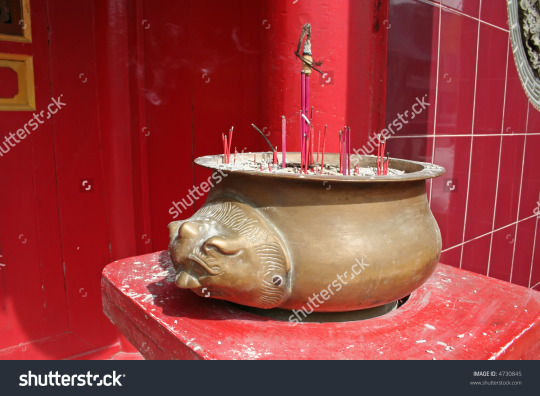
The animals one of Mulan’s ancestors is pointing to are part of the Chinese zodiac. From left to right, it’s the ox, rooster and rabbit.

Interesting that the monkey is referred to is the wisest.

The stone dragon pictured below takes on the posture of a Chinese stone lion.
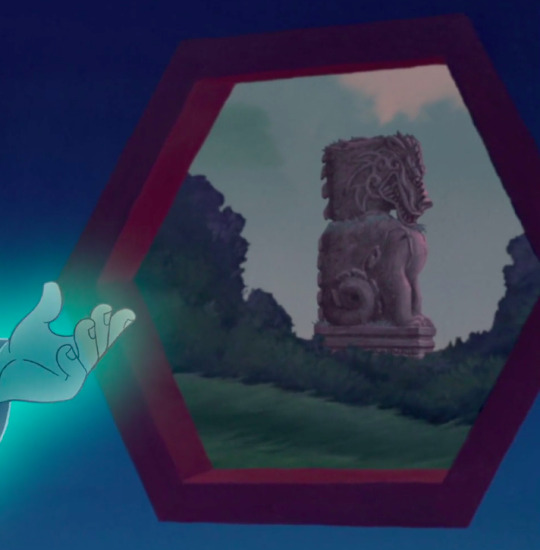
Chinese stone lions normally look like this and usually come in pairs. The one on the left is the male one with a ball beneath its right paw and the one on the right is female, with her offspring beneath her paw.
In the West, they’re called Fu Dogs for some reason, and I made the mistake of calling them that a few times. Sorry.

I feel like Shan Yu takes after Genghis Khan, especially his clothes, which I suspect were very loosely based on Mongols, with the hood and all. I also get this vibe from the moustache.


Ok, this is Genghis’ son, Ogodei Khan, but the hat style is similar, I guess, even though Shan Yu is wearing a hoodie? Hoodies weren’t invented until the 1930s, and we started calling them that in the 90s.
The eagle/falcon also reminds me of Mongolian eagle hunters, like this 13-year-old.
But Shan Yu is supposed to be a Hun? Although in the original Ballad of Mulan, they were supposed to be fighting the Tujie people. Yeah, Disney took historical liberties with this one.
Oh, wait. Shan Yu may be a bastardised pronunciation of Chan Yu, the title of rulers in the Central Asian region. It was definitely used during the Qin dynasty (221-206 BCE) and Han dynasty (206 BCE–220 CE), as the Luandi clan of the Xiongnu called their leader that.
All in all, it’s just terrible to conflate nomadic races together like that. I'm looking forward to the day in which we strive for more accuracy, not less, in presenting other races and cultures.

My version doesn’t have subtitles, but in this frame, Chien Po is asking Yao to calm down with a meditative Buddhist chant, “Na mo amitabha”. In Chinese, it’s “na mo amituofo,” but hey mangled it to include something like “tofu.” Oh dear. I really wish that people would try and say Buddhist chants right as well. It’s not a joke. Oh well.
If the general leads a cavalry unit, then why is Shang leading a combat unit, as the later training montage would show? I don’t get it.
The composition for this shot is pretty nice, though.
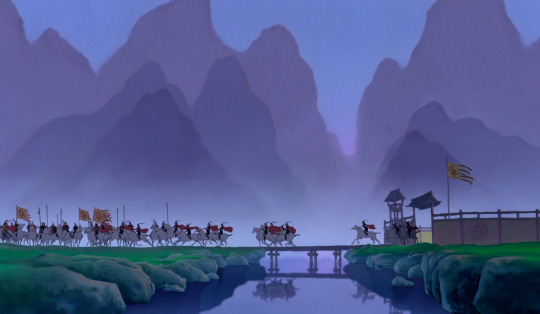
According to this website, here is how the ancient Chinese military ranking system worked. The highest is the unit commander, and you know that Shang’s father is pretty up there since he’s the general. Shang himself is the Captain, and I’m wondering why he wasn’t Lieutenant or Lieutenant General. The movie makers probably simplified the hierarchy to simplify shit.
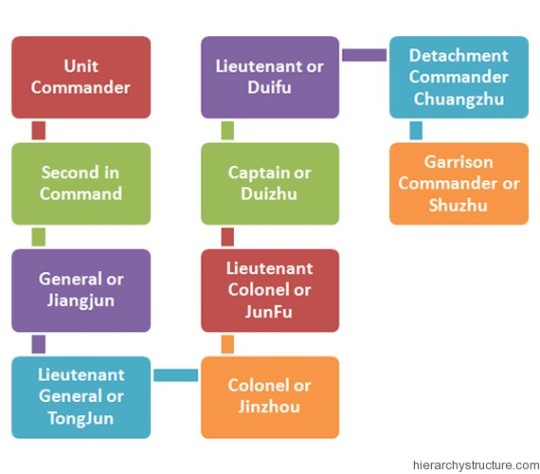
Shang is using the Bo staff, or a 棒 (bàng):

You can watch a YouTube Tutorial here:
youtube
Guess who also uses a 棒:

That’s right! It’s the Monkey King and his 如意金箍棒 (Ruyi Jingu Bang)! This was illustrated by @shelzie and can be found here.
Extra tidbit time:
The Shaolin monks actually had a say in founding the Tang dynasty, so I guess it was pretty spot on of the movie’s creators to include some Shaolin-esque type kungfu in the movie.
Anyway, here’s the extra info.
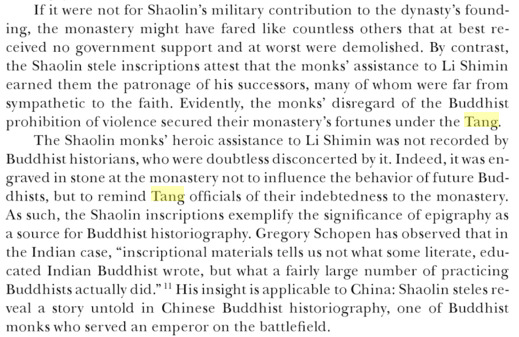
This excerpt was from: The Shaolin Monastery: History, Religion, and the Chinese Martial Arts by Meir Shahar.
Are these guys supposed to be infantry or cavalry? I don’t get it? Why are they using the bow after using the staff?

Anyway, here are the different types of bows that could be found in the Ming dynasty.
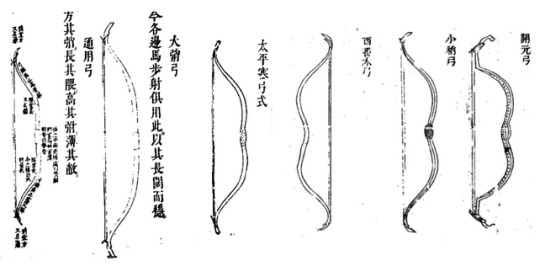
I am guessing that the bows used resemble the most from the second one from the left, which is called the big-siyah bow (大弰弓) according to Wikipedia. I know we’re basing the commentary on the Tang dynasty because the Ballad of Mulan first appeared in the Tang dynasty, but I was only able to find this.
Chinese people were actually credited with making the world’s first flaming arrows, cause, y’know, they invented gunpowder in mid-century 1 AD.

Poor Yao. Flaming arrows were first used in the Southern Wu Kingdom in 904, to invade this place called Yuzhang which was wayyy after the Tang dynasty. Yuzhang is the capital of today’s Jiangxi province.
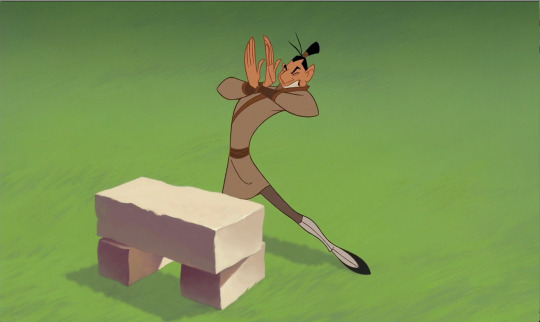
This does exist in present day, where Shaolin monks train their bodies to withstand the force of these objects, or to harness their chi. There are many martial arts techniques from various types of Asian martial arts as well, like Taekwondo and Karate. You can read more about it here.
Chen Yi-Chang also designed the cannons (you can watch a video about it here, just jump to 2:57) and the first fire cannons were found in a painting of Dunhuang dated around 950, and it was more of a fire lance than anything else. Technology advanced, and by the time you got to the Ming dynasty, you really had fire power that could pack a punch.
Side detail: I like how the smoke that comes out looks like the clouds in those ancient Chinese paintings.

Why is Chi-Fu holding a clipboard? Those haven’t been invented yet!
Is he writing on paper? If so, it doesn’t make sense for the bamboo books to be seen previously because the bamboo books came before paper.
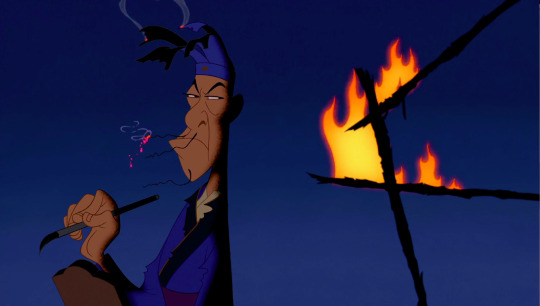
This post was edited on 25/10 for grammar and further fact checking.
200 notes
·
View notes
Text
Mulan Annotated 4 - Mulan’s Father Enlists
In this emotional scene, the script on these ancestral tablets are definitely of the Xiaozhuan, or lesser seal Chinese script. You can read about it here.

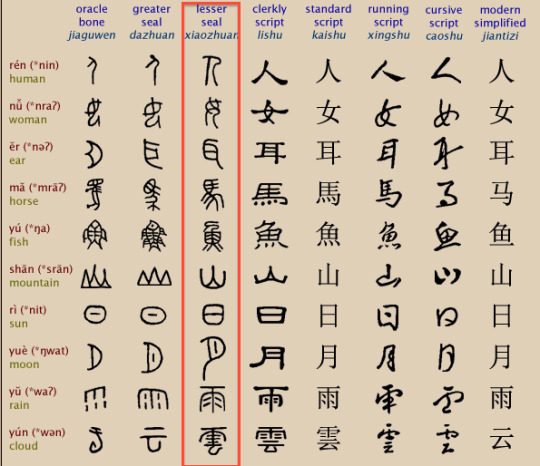
Remember the quote? “The flower that blooms in adversity is the rarest and most beautiful of all.”

It is possible that the flowers are magnolias, since Mulan (木蘭/木兰) does mean magnolia, but the symbolism for those flowers connote nobility and/or feminine beauty. My guess would be that these flowers grown are plum blossoms, because they symbolise endurance as they bloom after winter.
According to this website,
‘The fragrance of plum blossoms “comes from the bitterness and coldness,” as the Chinese saying goes. Souls are tempered in the depth of experience, growing in inner strength and unyielding courage.’
I guess it pretty much fits the theme of Mulan.
There are obviously many different kinds of plum blossoms and the movie may or may not have taken creative liberties, but this is the flower I could think of. No extra pictures for this one because it may cause confusion.
War drums did exist back in the day, but it wasn’t used to announce the arrival of any official. These drums may have existed in the battlefield, but I am not use if these pavilions did.
It’s plausible that you had war drums to help the soldiers march, but highly unlikely that they would build pavilions.

I’d assume Chi-Fu would want drums to announce his arrival, ‘cause he’s dramatic like that.

This is the war drum from Wikipedia.
Ok, so Chi-Fi is doing the hoity toity minster thing and commanding everyone to enlist in the army because it’s their patriotic duty. I still disagree with the dragon design on the flags, but I feel like I’ve seen these types of flags
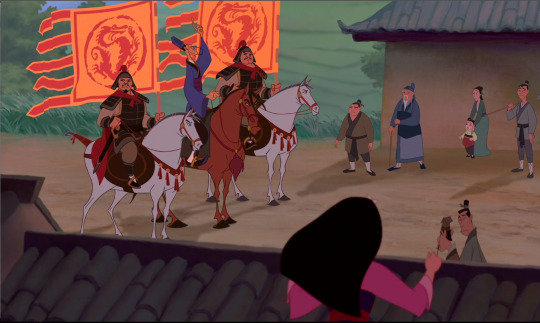
The general shape of the flags should be fairly accurate. The one below shows how flags looked like 1,500 BC, and I guess that over time, it was modified into the design you see in the film.
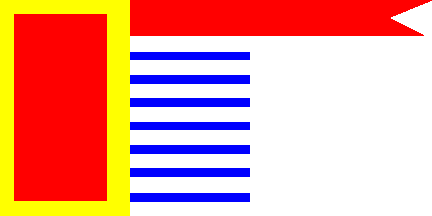
Also, has anyone ever wondered what Chi-Fu’s actual job was? He may or may not be the Emperor’s relative because ancient rulers were not completely above cronyism, come on. He seems to be the secretary to the Emperor, or one of the chief ministers, but my guess says that he was probably one of the big officials from The Ministry of Defense or Board of War. If he rose high up enough in rank, he would actually be able to supersede a general’s orders, but the film makes fun of him and he doesn’t seem all that competent at the art of war. Hmm....
Check out the motif on this Chinese cabinet! The Chinese cabinet featured here is a bit strange because the door knob has a face that looks like a qilin. Actual cupboard locks were just plain metal, but the wood had many detailed motifs drawn on them. The motifs of the wood would hint at the owner’s occupation, which was pretty cool. You can check out more info about Chinese cabinets here.

Here’s an antique cupboard for reference:
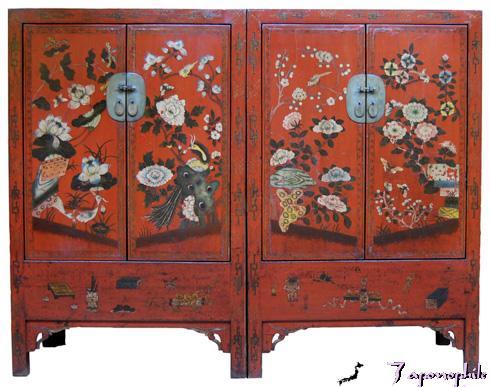
You can look for it here.
OMG I can’t believe I took so long to look for ancient Chinese cupboards.
#omg#ancient chinese cupboards are a thing?#hahaha#chinese culture#ancient china#disney#mulan#mulan annotated#chinese history
193 notes
·
View notes
Text
11100111 10111011 10011101 11100100 10111000 10001101 11100100 10111100 10011010 11100110 10010100 10111110 11100101 10111100 10000011 11100100 10111101 10100000
61K notes
·
View notes
Text
Mulan Annotated 3 - Matchmaking Fail
This is my least favourite part of the movie because it was so cringey. And by least favourite part, I mean, Mulan and some other random ladies doing the song-and-dance thing to see the matchmaker. It felt cheesy AF, and I wasn’t surprised that it was grossly inaccurate. Anyway, let’s move on:

Lucky crickets were an actual thing. Like, for real. Chinese people used to keep them in cages, and they even had cricket fights. One story in Pu Songling’s Strange Tales talks about how a man possesses a cricket’s body and fights for his life to win matches. Talk about creepy. Cricket fights were a thing in the Song dynasty, though in the Tang, people mainly chilled and listened to their songs.
I don’t think any female soldier would have carried a cricket along to war, though. It doesn’t make sense to worry about your pet when fighting.

Ok, so Grandma almost dies (luck doesn’t work that way, lady) but it’s pretty cool of them to inclue a paifang. Check it out:

This one was from WIkipedia, taken at the Cemetery of Confucius. It’s the gate of the tomb of Lady Yu, wife of Kong Xianpei in Qufu, China.

Having a tiny waist was ideal at one point in time, and King Ling during the Spring and Autumn period preferred women with tiny waists, which led many would-be concubines to starve themselves. Not good.
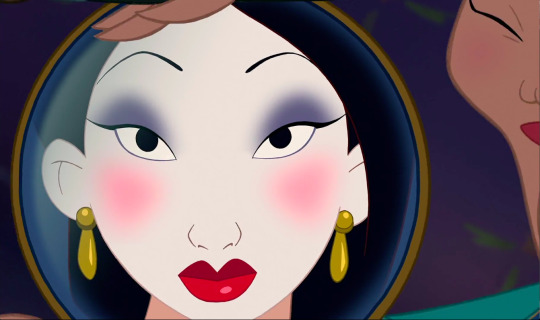
The focus of Chinese make-up was definitely the eyebrows and the lips, not so much eyeshadow. Powder was first made using rice, mixing it with water and pouring it out, and in later years, pearl and spices were used.
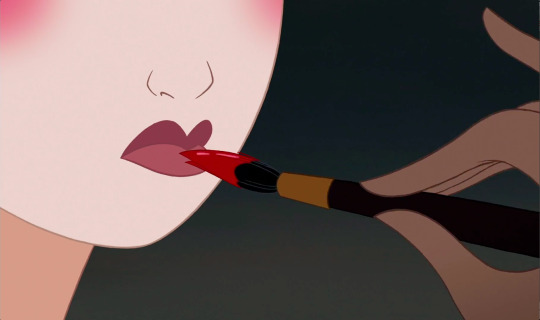
I don’t think lipstick was applied like this, and that it came in those round containers that looked like the lip balm we have today. Later, in the Tang dynasty, it came in tubes, which were better for contouring a shape onto the lips.
For reference, here’s Nancy Duong’s chart of fashionable eyebrow looks throughout the years:
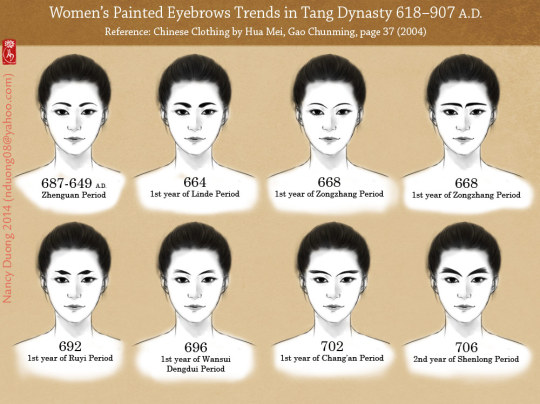
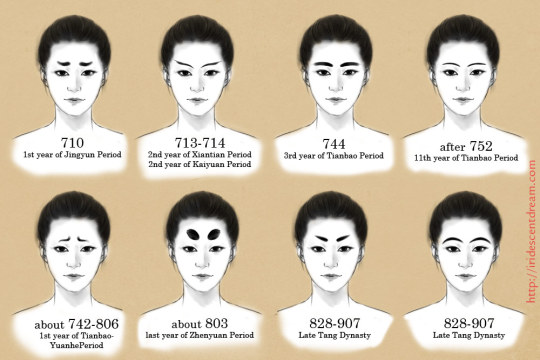
The trending lip shapes in the Tang dynasty range from those in the 3rd to 5th columns:

You can read more about it here and here. It doesn’t make sense for her make-up to look like that when all the other women who are on the way to see the matchmaker obviously had Tang inspired styles. But hey, creative liberties, amirite?

Props to Nancy Duong from her Tumblr for referring to many statues and drawing them out in this chart:

I don’t want to modify her chart because it’s just plain rude to do something like that when someone has painstakingly put it together. I imagine it took hours of work. Lots of these probably inspired the look for the girls who had to be matchmade alongside Mulan. The second one from the right even has a beauty mark on her forehead.
For more stuff about make-up, you can watch this Off The Great Wall video:
youtube
Anyway, let’s get back to the movie, where Mulan enters the matchmaker’s abode.
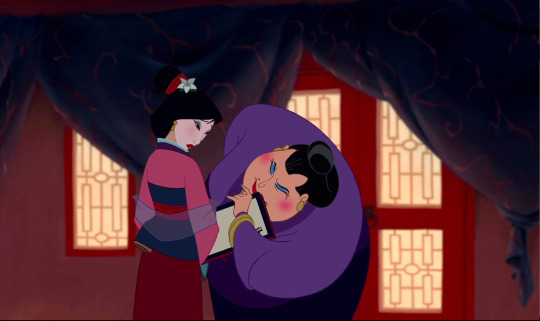
It was, and still is a thing to look at women for child-bearing hips. In this case, the matchmaker insinuates that she is too skinny. In Tang China, fleshy concubines were ideal. Yang Guifei, the famous concubine, was said to be quite fleshy, and Emperor Xuazong loved her for that.
By the way, that’s totally not how matchmaking was done in ancient China. No beautiful ladies paraded in the streets with a full face and umbrellas. Nope.
Ok, so marriage in China was patriarchal and tedious as fuck. There was this thing called the three letters and six etiquettes (三書六禮).
The man’s parents would usually ask a matchmaker when they found someone for their son to marry, and then they’d get the matchmaker to compare birth dates. According to Wikipedia, it’s called the “秊庚八字; pinyin: niángēng bāzì; literally: "the 8 cyclic characters for year, month, day and hour of birth of a man, which determine his fate") in which suan ming (Chinese fortune telling) is used to predict the future of that couple-to-be. If the result of suan ming was good, they then would go to the next step, submitting bride price.”
Then they agree on the bride pride, the gifts, and how the wedding would go. And the matchmaker would make sure that both families wouldn’t hate each other and agree most of the time throughout the proceedings.
You can read about how everything was like here and here.
The last bit where the matchmaker says that Mulan will never bring her family honour is a huge blow, though--it’s in public, and the family has lost face. o_O
362 notes
·
View notes
Text
Mulan Annotated 2 - Mulan’s House
I’m back with the second instalment of Mulan! Now that the prologue is out of the way, we’re looking at how Mulan spends her days. The whole sequence in which she gets out of bed and does her chores proves that she’s really smart. I cannot confirm if her pyjamas was what women in ancient China wore -- probably not, perhaps it was some kind of robes -- but these were the most glaring discrepancies i could find:

I don’t think the script would look like this in ancient China, btw, since the simplified version was developed in the 1950s.
Here’s a diagram of the evolution of the Chinese script below, from this website:
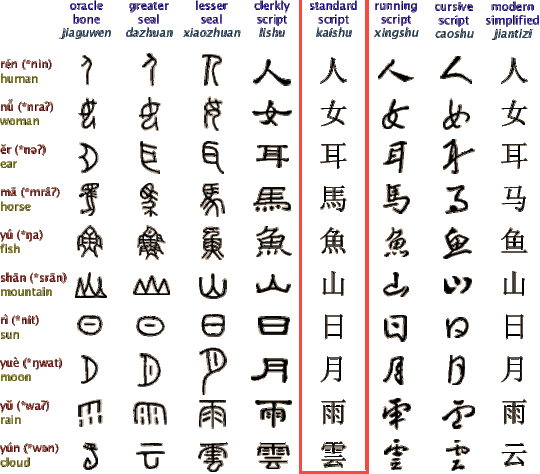
Since the ballad of Mulan was written in the Tang Dynasty, the script was probably in the Standard Script, as highlighted in the diagram. That was when this form of writing really matured.
And no, that’s not how you write characters on bamboo books. It actually looks more like this:

This image is from Wikipedia, and is from the Shanghai Museum dated around 300 BC. It’s commentary of the Classic of Poetry.
Anyway, back to the text. While Mulan is reading it, she says, “quiet, demure, graceful, polite, refined, poised, and punctual.” She is reading from the right to the left.
文静, wén jìng, I guess, could be quiet, but it also connotes calmness.
娴淑, xián shū, however, is completely wrong. It should either be 娴熟 (xián shú), or 贤淑 (xián shū). The first one meaning skilled, and the second one meaning to be a virtuous woman.
优雅 (yōu yǎ) is graceful, which is correct.
礼貌 (lǐ mào) is more like courtesy, to be honest, but polite is all right as translation.
坦然 (tǎn rán) is calm and undisturbed more than poised or refined.
准时 (zhǔn shí) definitely means punctual.
Before I forget...

It’s not actually possible to do this unless the rice is very sticky, and the way you eat rice from a bowl is bringing it to your mouth and using the chopsticks to push it directly into your mouth.
Also:

If Mulan’s parents ever saw this, they would kill her! Every Chinese person who is taught that they should never ever do that to their chopsticks because it looks like you’re burning incense to your ancestors! Chopsticks should be laid horizontally across the bowl.
There you go.
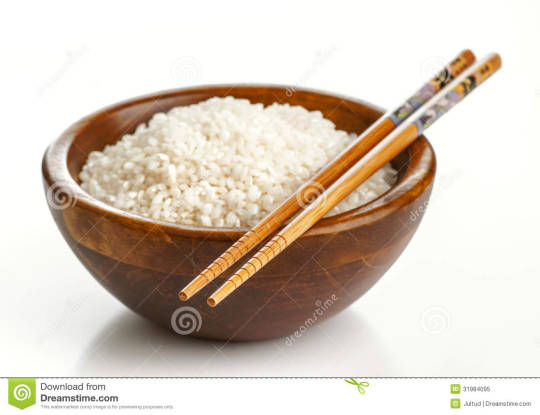
Ok now let’s talk about architecture:

I gotta give the animators props for including a moon gate here, for sure. You can find this in lots of Chinese gardens.
Also, I screencapped the general layout of Mulan’s house from this video:
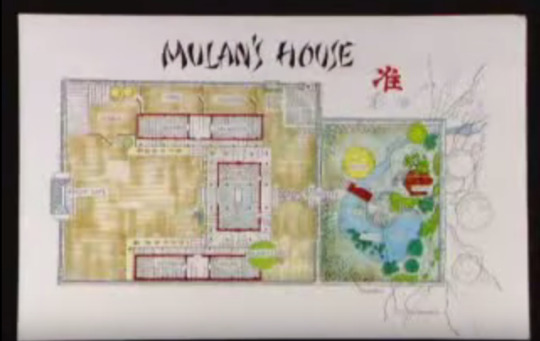
This is clearly a siheyuan, and the origin of houses like that dates back to the Shang Dynasty, if not, the Zhou. Judging from the layout, you can tell that Mulan’s family was pretty wealthy. (In the original text, it was her father who taught her how to fight, something that the privileged class did with their children, anyway, judging from the bios of Princess Pingyang).
Anyway, the house looks close enough to the one you can find on Wikipedia, and you can read more about it here.
And here’s a picture:
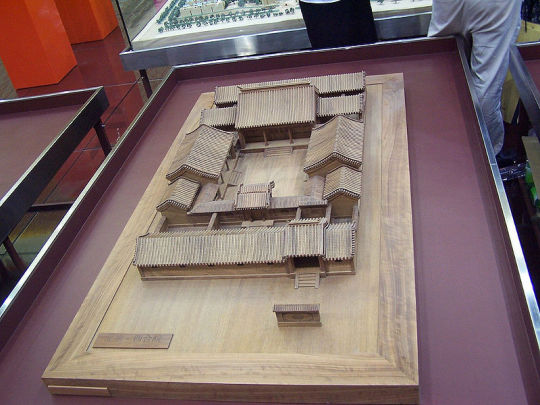
I don’t understand why Fa Zhou doesn’t have an altar to worship his ancestors? Like, who does that?
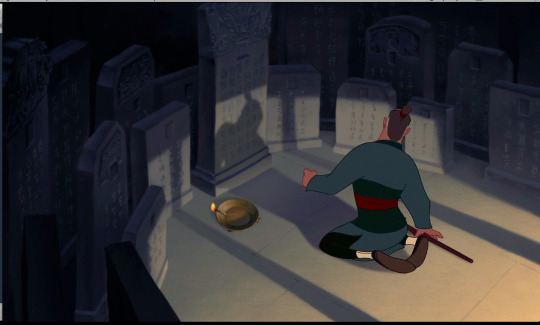
And offering just one stick of incense is pretty stingy, considering people go all out to worship their ancestors.

Ok this is kinda over the top, but I didn’t want to use other people’s pictures (it’s kinda intrusive) so I chose an illustration. I think these tablets come from Taiwan, because one of the movie’s character designers, Chen Yi-Chang came from there. But altars should be there with offerings, especially when it comes to ancestral worship.
You gotta be generous with this shit, just sayin’.
262 notes
·
View notes
Text
Mulan Annotated 1 - Prologue
Because I feel like it, I’m going to annotate Mulan. Jin from @atla-annotated inspired this post, and she also supplied some information.
Although I have been running this blog for years, I acknowlege that I may make mistakes. Please be courteous. Thank you!
I also hate writing long introductions so here goes:

Opening credit! Yay! This is the Great Wall of China, and the art style mimics Shan Shui Hua -- traditional Chinese painting, except, most of the time, it’s a lot more detailed. But I mean, if you had to animate something like this (see below), you would take forever.
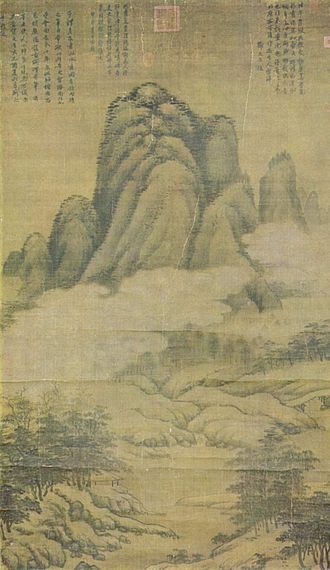
A painting by Yuan Dynasty artist Gao Kegong (1248–1310)
This Great Wall of China wasn’t built until the Ming dynasty in the 14th century. The Hongwu Emperor decided to make it a thing, for reals.

I am also not sure if the Chinese flag really looked like that. Let’s assume that Mulan happened in the Tang dynasty, but we don’t know enough to know what the flag looked like.

LOL look at the guy flippin’ his shit. Were grappling hooks invented back then? I think so. They supposedly came from Rome BCE. Since the Silk Road was connected to Rome, it is plausible that the Chinese people were able to know of and use this technology.

Yup, this is a Chinese dao all right.

Why does the dragon to the emperor’s palace look more Western than Eastern? There is a serious lack of symmetry going on here. If the emperor’s palace is based on Beijing’s Forbidden City, and we know it is, there should definitely also be a lot more detail on this.
It should look more like this:

It is also possible that the animation department didn’t want so many details, or maybe there wasn’t enough time or budget, because all these details would be a pain to trace.
The general’s uniform looks familiar...
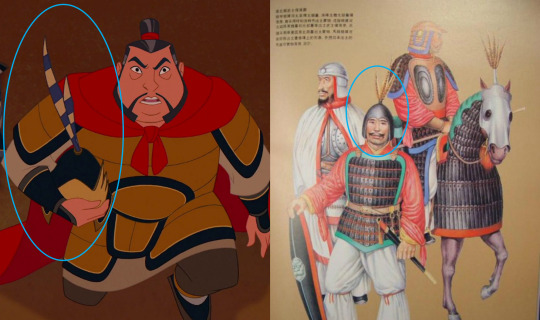
Aha. I found an image from this website and it shows that the helmet is the similar the the one from the Wei and Jin dynasties!
I don’t think the general’s uniform belongs in any one dynasty, judging from the rest of the images on the site. It’s more like a pastiche of what the uniforms were like.
Oh yeah, but somehow, the cape was a thing.
The emperor’s hanfu, according to the animators of the movie, was from the reliefs of the Mogao caves, and references the clothing styles of the Northern Wei dynasty.

And here we go:

The thing is, the “crown” is called a mian guan, and it’s supposed to have those dangling beads coming down from it. And the emperor’s mian guan is supposed to have 12 strands of beads hanging down from the front and the back. The man in the red and black robes is Emperor Wei of the Jin dynasty, and according to the book 5,000 years of Chinese Costume, pg. 54,
“On the whole, the costumes of the Wei and Jin period still followed the patterns of Qin and Han.
“From the costumes worn by the benefactors in the Dunhuang murals and the costumes of the pottery figurines unearthed in Louyang, it can be seen that women’s costumes in the period of Wei and Jin were generally large and loose. The upper garment opened at the front and was tied at the waist. The sleeves were broad and fringed at the cuffs with decorative borders of a different colour. The skirt had spaced coloured stripes and was tied with a white silk band at the waist.”
As for Chi-Fu? His name probably means 欺负 (qīfù), which is something Jin from @atla-annotated pointed out to me a while back.

And of course, I just had to share a picture of what I think Chi-Fu may have worn.
213 notes
·
View notes
